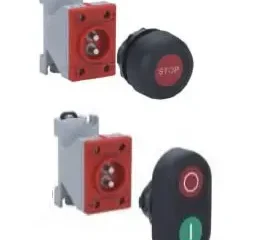In industries where explosive atmospheres pose a potential hazard, ensuring safe and reliable lighting solutions is essential. ATEX-certified lighting is specifically designed to operate in hazardous environments, providing critical illumination while minimizing the risk of ignition. This article explores the importance of ATEX-certified lighting and how it enhances safety across various sectors, including oil and gas, mining, chemical processing, and manufacturing.
Why ATEX Lighting is Crucial
Explosive atmospheres occur when flammable gases, vapors, dust, or fibers mix with air in certain concentrations. In these conditions, a spark or excessive heat from a piece of electrical equipment could trigger an explosion. ATEX-certified lighting is designed to prevent such events by adhering to strict safety standards outlined in the ATEX directive (2014/34/EU). These lighting solutions are rigorously tested to ensure they do not become a source of ignition in hazardous areas.
Key Features of ATEX Lighting Solutions
ATEX lighting systems offer several critical features that help to mitigate risks:
- Explosion-Proof Design: The housing of ATEX lighting is robust, often made of materials like aluminum or stainless steel, and designed to contain any internal explosion, preventing it from igniting the surrounding atmosphere.
- Intrinsically Safe Circuits: Many ATEX lighting systems utilize intrinsically safe circuits, limiting electrical and thermal energy to levels incapable of causing ignition, even in fault conditions.
- Ingress Protection (IP Ratings): These lights have high IP ratings, often IP66 or higher, meaning they are dust-tight and protected against powerful water jets. This makes them suitable for outdoor and heavy-duty industrial environments.
- Temperature Control: ATEX lighting solutions maintain low surface temperatures, reducing the risk of igniting gases or dust in hazardous areas.
Types of ATEX Lighting
Several types of lighting solutions are available under ATEX certification, each serving a unique purpose in hazardous areas:
- Fixed Lighting Systems: These are permanently installed in industrial facilities like chemical plants, refineries, or offshore oil platforms, providing continuous illumination in hazardous zones.
- Portable Lighting: ATEX-certified portable lighting, such as handheld torches or rechargeable lamps, is designed for workers who need mobility in hazardous environments. These lights are often used in confined spaces or during inspections.
- Floodlights and Emergency Lighting: In addition to fixed lighting, floodlights and emergency lighting play a critical role in ensuring safe evacuation routes and visibility during power outages or emergencies.
Applications of ATEX-Certified Lighting
ATEX lighting is critical in many high-risk industries:
- Oil and Gas: Offshore platforms, refineries, and gas processing plants require ATEX-certified lighting to prevent catastrophic explosions caused by volatile substances.
- Mining: Mines are often laden with combustible dust, making ATEX lighting essential for the safety of workers in underground environments.
- Chemical Processing: Factories dealing with hazardous chemicals and vapors need explosion-proof lighting to avoid accidental ignition.
- Pharmaceuticals: ATEX lighting ensures safe conditions in environments where fine dust or vapors could create explosive atmospheres.
Maintaining and Inspecting ATEX Lighting
It’s not just enough to install ATEX-certified lighting; regular maintenance and inspection are essential to ensure ongoing safety. Companies must comply with ATEX maintenance standards, ensuring that lighting fixtures remain explosion-proof and that no degradation has occurred that could compromise their safety features.
Conclusion
ATEX-certified lighting is a vital component in industries where safety and regulatory compliance are paramount. By choosing explosion-proof lighting solutions and adhering to strict maintenance protocols, companies can significantly reduce the risk of ignition in hazardous environments, protecting both personnel and equipment.
Incorporating ATEX lighting not only ensures regulatory compliance but also enhances overall operational safety, making it an indispensable investment for companies operating in explosive atmospheres.



0 Comments